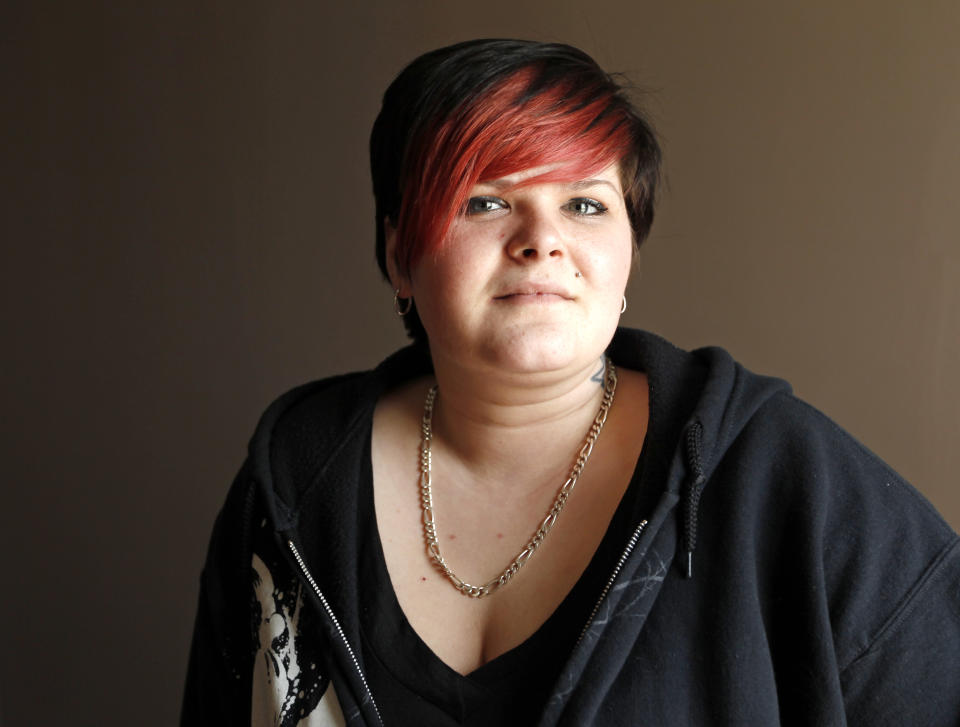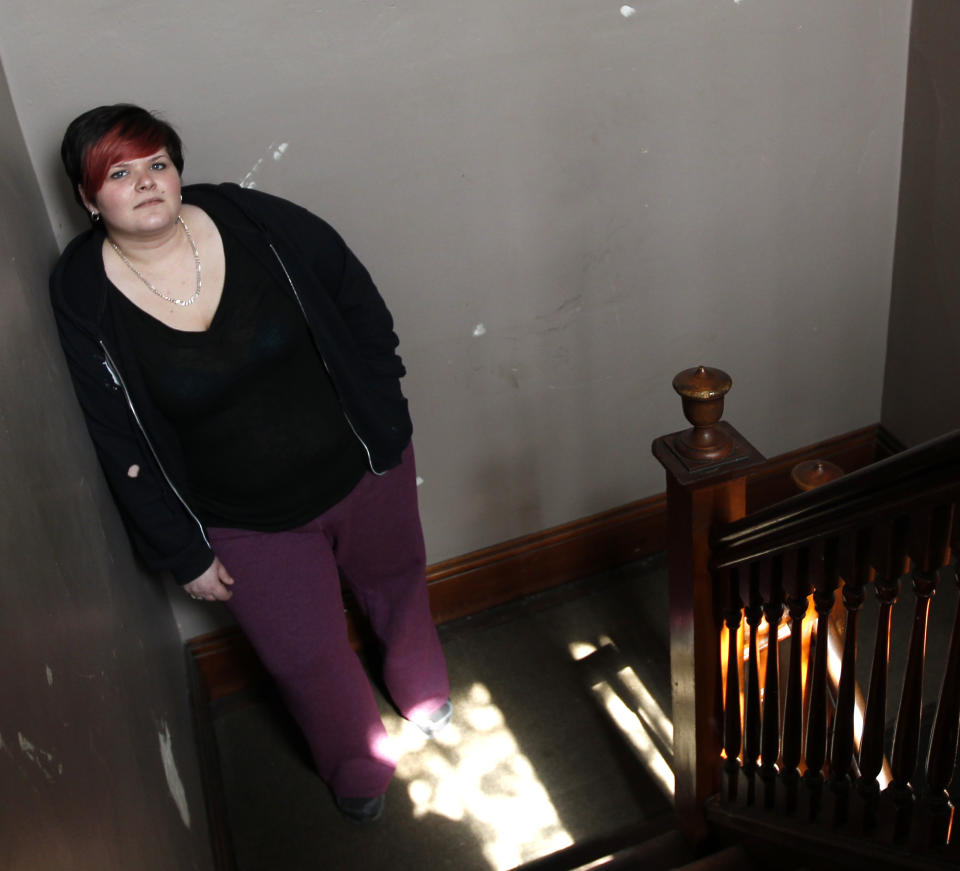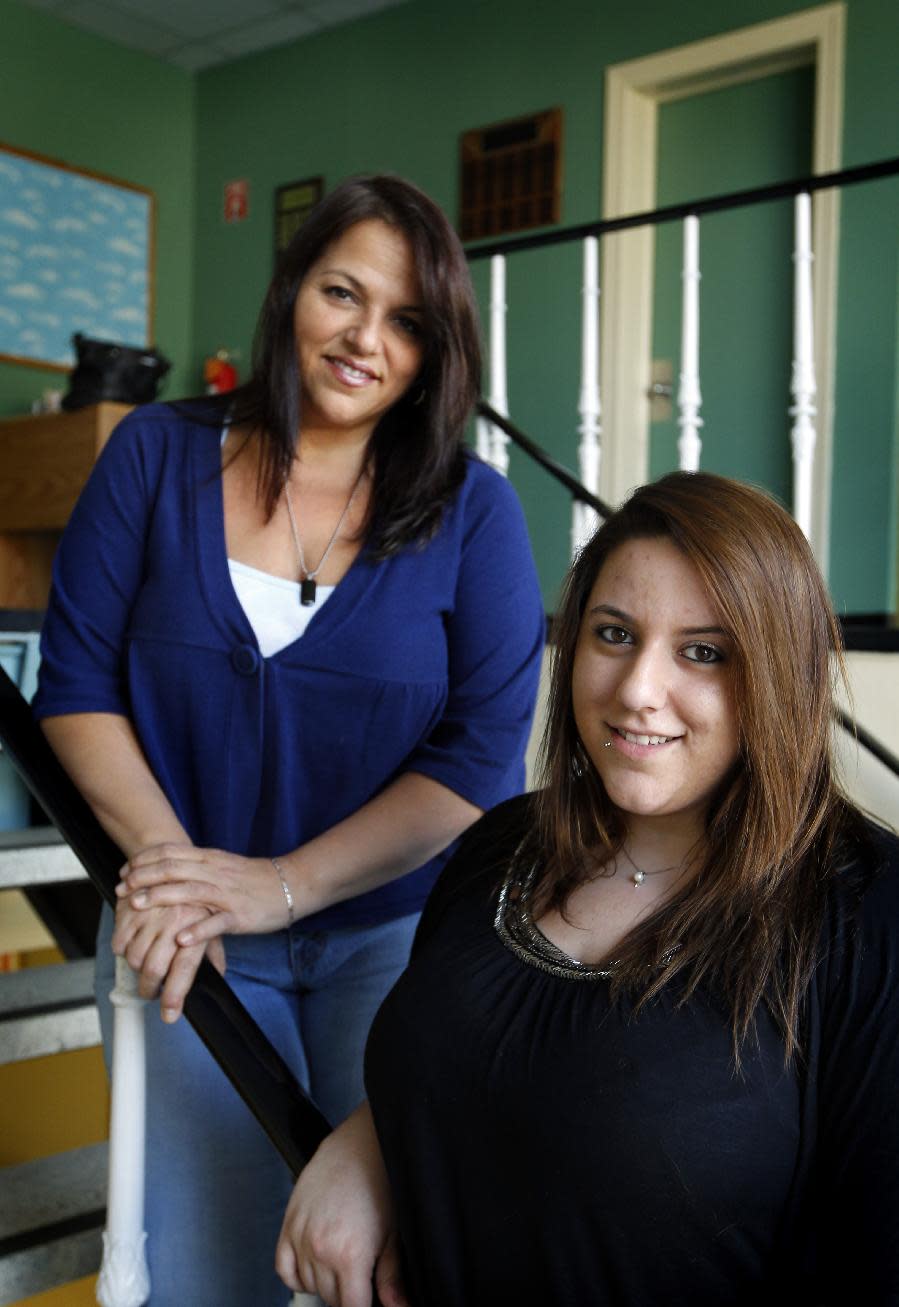Painkiller sales soar around US, fuel addiction
NEW YORK (AP) — Sales of the nation's two most popular prescription painkillers have exploded in new parts of the country, an Associated Press analysis shows, worrying experts who say the push to relieve patients' suffering is spawning an addiction epidemic.
From New York's Staten Island to Santa Fe, N.M., Drug Enforcement Administration figures show dramatic rises between 2000 and 2010 in the distribution of oxycodone, the key ingredient in OxyContin, Percocet and Percodan. Some places saw sales increase sixteenfold.
Meanwhile, the distribution of hydrocodone, the key ingredient in Vicodin, Norco and Lortab, is rising in Appalachia, the original epicenter of the painkiller epidemic, as well as in the Midwest.
The increases have coincided with a wave of overdose deaths, pharmacy robberies and other problems in New Mexico, Nevada, Utah, Florida and other states. Opioid pain relievers, the category that includes oxycodone and hydrocodone, caused 14,800 overdose deaths in 2008 alone, and the death toll is rising, the Centers for Disease Control and Prevention says.
Nationwide, pharmacies received and ultimately dispensed the equivalent of 69 tons of pure oxycodone and 42 tons of pure hydrocodone in 2010, the last year for which statistics are available. That's enough to give 40 5-mg Percocets and 24 5-mg Vicodins to every person in the United States. The DEA data records shipments from distributors to pharmacies, hospitals, practitioners and teaching institutions. The drugs are eventually dispensed and sold to patients, but the DEA does not keep track of how much individual patients receive.
The increase is partly due to the aging U.S. population with pain issues and a greater willingness by doctors to treat pain, said Gregory Bunt, medical director at New York's Daytop Village chain of drug treatment clinics.
Sales are also being driven by addiction, as users become physically dependent on painkillers and begin "doctor shopping" to keep the prescriptions coming, he said.
"Prescription medications can provide enormous health and quality-of-life benefits to patients," Gil Kerlikowske, the U.S. drug czar, told Congress in March. "However, we all now recognize that these drugs can be just as dangerous and deadly as illicit substances when misused or abused."
Opioids like hydrocodone and oxycodone can release intense feelings of well-being. Some abusers swallow the pills; others crush them, then smoke, snort or inject the powder.
Unlike most street drugs, the problem has its roots in two disparate parts of the country — Appalachia and affluent suburbs, said Pete Jackson, president of Advocates for the Reform of Prescription Opioids.
"Now it's spreading from those two poles," Jackson said.
The AP analysis used drug data collected quarterly by the DEA's Automation of Reports and Consolidated Orders System. The DEA tracks shipments sent from distributors to pharmacies, hospitals, practitioners and teaching institutions and then compiles the data using three-digit ZIP codes. Every ZIP code starting with 100-, for example, is lumped together into one figure.
The AP combined this data with census figures to determine effective sales per capita.
A few ZIP codes that include military bases or Veterans Affairs hospitals have seen large increases in painkiller use because of soldier patients injured in the Middle East, law enforcement officials say. In addition, small areas around St. Louis, Indianapolis, Las Vegas and Newark, N.J., have seen their totals affected because mail-order pharmacies have shipping centers there, said Carmen Catizone, executive director of the National Association of Boards of Pharmacy.
Many of the sales trends stretch across bigger areas.
In 2000, oxycodone sales were centered in coal-mining areas of West Virginia and eastern Kentucky — places with high concentrations of people with back problems and other chronic pain.
But by 2010, the strongest oxycodone sales had overtaken most of Tennessee and Kentucky, stretching as far north as Columbus, Ohio and as far south as Macon, Ga.
Per-capita oxycodone sales increased five- or six-fold in most of Tennessee during the decade.
"We've got a problem. We've got to get a handle on it," said Tommy Farmer, a counterdrug official with the Tennessee Bureau of Investigation.
Many buyers began crossing into Tennessee to fill prescriptions after border states began strengthening computer systems meant to monitor drug sales, Farmer said.
In 2006, only 20 states had prescription drug monitoring programs aimed at tracking patients. Now 40 do, but many aren't linked together, so abusers can simply go to another state when they're flagged in one state's system. There is no federal monitoring of prescription drugs at the patient level.
In Florida, the AP analysis underscores the difficulty of the state's decade-long battle against "pill mills," unscrupulous doctors who churn out dozens of prescriptions a day.
In 2000, Florida's oxycodone sales were centered around West Palm Beach. By 2010, oxycodone was flowing to nearly every part of the state.
While still not as high as in Appalachia or Florida, oxycodone sales also increased dramatically in New York City and its suburbs. The borough of Staten Island saw sales leap 1,200 percent.
New York's Long Island has also seen huge increases. In Islip, N.Y., teenager Makenzie Emerson says she started stealing oxycodone that her mother was prescribed in 2009 after a fall on ice. Soon Emerson was popping six pills at a time.
"When I would go over to friends' houses I would raid their medicine cabinets because I knew their parents were most likely taking something," said Emerson, now 19.
One day she overdosed at the mall. Her mother, Phyllis Ferraro, tried to keep her daughter breathing until the ambulance arrived.
"The pills are everywhere," Ferraro said. "There aren't enough treatment centers and yet there's a pharmacy on every corner."
The American Southwest has emerged as another hot spot.
Parts of New Mexico have seen tenfold increases in oxycodone sales per capita and fivefold increases in hydrocodone. The state had the highest rate of opioid painkiller overdoses in 2008, with 27 per 100,000 population.
Many parts of eastern California received only modest amounts of oxycodone in 2010, but the increase from 2000 was dramatic — more than 500 percent around Modesto and Stockton.
Many California addicts are switching from methamphetamine to prescription pills, said John Harsany, medical director of Riverside County's substance abuse program.
Hydrocodone use has increased in some areas with large Indian reservations, including South Dakota, northeastern Arizona and northern Minnesota and Wisconsin. Many of these communities have battled substance abuse problems in the past.
Experts worry painkiller sales are spreading quickly in areas where there are few clinics to treat people who get hooked, Bunt said.
In Utica, N.Y., Patricia Reynolds has struggled to find treatment after becoming dependent on hydrocodone pills originally prescribed for a broken tailbone. She said the nearest clinics offering the rehabilitation programs she wants are full and not accepting new patients.
"It's a really sad epidemic," Reynolds said. "I want people to start talking about it instead of pretending it's not a problem and hiding."
___
AP Interactive Graphic: http://hosted.ap.org/interactives/2012/painkiller-nation/
Associated Press interactive producers Phil Holm and Michelle Minkoff contributed to this report.








